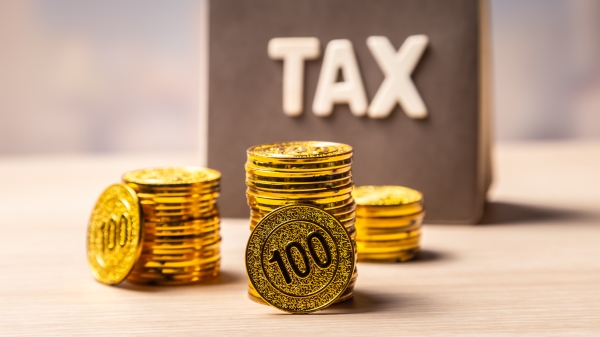Everything You Need to Know About Tax-loss Harvesting

If you thought you could only gain from an increase in the value of your portfolio, you may not be entirely correct. While you indeed gain when the value of the assets in your portfolio increases, you can also substantially benefit when the value of some assets decreases. This is possible by a mechanism called tax-loss harvesting.
Table of Contents
What is tax-loss harvesting?
Tax-loss harvesting is an opportunistic method to boost post-tax returns on your investments indirectly. This method involves the selling of portfolio assets (including stocks, mutual funds, exchange-traded funds, etc.) at a loss to reduce the capital gain tax liability overall. Tax-loss harvesting is very useful in limiting short-term capital gains since they are taxed at a higher rate than long-term capital gain; however, it is also now increasingly used to offset long-term capital gain taxes too. This strategy is best deployed during the initial life of a portfolio.
To make it simpler, it is best to understand tax-loss harvesting from depth. When you invest in a portfolio that has equity or equity-based assets, you are set to realize capital gains or losses depending on the market situation. In case of capital gain, the investor is liable to pay a tax depending on the investment bracket. The gains realised from portfolios held for a year are known as short-term gains and the other longer duration gains are called long-term capital gains. Tax-loss harvesting comes into the picture when you as an investor aim to reduce the overall tax liability of capital gains by selling some of your holdings at a loss. This strategy helps to significantly reduce the tax burden on the investor.
How does the tax-loss harvesting function?
The fundamental basics behind the tax-loss harvesting method are fairly simple – increase the losses to reduce the overall tax burden. Generally, during or before the annual financial planning (any time of the year), the investor studies the portfolios that have been falling consistently and are not expected to shoot up any time shortly. These identified equity or equity-based funds are then sold to register capital losses which ultimately help offset the capital gain amount, thereby reducing the overall capital gain tax liability.
For example, a portfolio of a typical investor made the following losses and gains by the end of the fiscal year:
Mutual Fund A (short-term) – Unrealized gains of $10000
Mutual Fund B (short-term) – Unrealised losses of $5000
Mutual Fund C (long-term) – Unrealised gains of $25000
Mutual Fund D (long-term) – Unrealised losses of $5000
At the end of the fiscal year, when the tax is calculated based on the above scenario, the following situations can occur:
- Without tax-loss harvesting the capital gain tax would be:
($10000 * 37%) + ($25000 * 20%)) = $8700
- With tax-loss harvesting, the capital gain tax would be:
(37% * ($10000 – $5000)) + (20%* ($25000 – $5000)) = $5850
Note: For the fiscal year 2020, the rate of federal taxes for long-term and short-term capital gains is 20% and 37% respectively.
So, for an investor who applies the tax-loss harvesting strategy, there is a saving of $2850 worth of capital gain tax liability.
What happens after tax-loss harvesting?
By applying the tax-loss harvesting strategy, you reduce the capital gain tax liability. However, it also means losing out on capital and idling away wealth which can be put to better use. So, the best after-strategy post applying the tax-loss harvesting method is to re-invest the capital in a lucrative stock or an equity fund. You could choose to re-invest the funds in the same class of assets. However, as per the rules, an investor cannot invest in the same or “substantially similar” assets within 30 days of having sold the previous ones at a loss for tax-harvesting purposes. In case the rule is not followed, its sale thereafter will be a wash sale.
What is the wash sale rule?
As per the IRS (Internal Revenue Service), the investor cannot buy back the same or “substantially similar” asset which was sold for tax-harvesting purposes until a period of 30 days from the date of a registered sale. For example, if you sold stocks of company X to gain an advantage for capital gain tax purposes, you cannot buy back company X’s stocks until a period of 30 days from the date of sale.
The rule extends to a period of 61 days because an investor has to hold the stock for at least 30 days before selling it to realize losses; further, the investor needs to wait for at least 31 more days before repurchasing the same or significantly similar asset. This tends to get more complex in cases of mutual funds and ETFs.
Also, the wash rule cannot be avoided by buying the same stock or asset from another account held by the investor, such as IRA (individual retirement account) or a spouse’s IRA.
What are the key points to remember?
While the process of tax-loss harvesting might sound simple, it can get very tricky and can also result in a fall-back if some important measures and points are not considered while applying the strategy.
Unequal Capital Gains
Capital gains accrue in two durations:
a) From short-term investments which are held for a year or less,
b) From long-term investments which are held for more than one year.
The basic difference between the two is the capital gain tax rate. The short-term capital gains are levied with a high tax rate (37%) as compared to long-term capital gains (20%). These can also go up or down respectively depending on the way the taxes are filed individually, but the core matter is to understand that there are different and unequal. Hence, as a wise investor, you should first offset short-term losses against short-term capital gains, and long-term losses against long-term capital gains. In case there are not enough long-term gains to offset all long-term losses, the remaining amount can be directed towards short-term gains. This can also be used alternatively for short-term losses.
Balance the Portfolio
While tax-loss harvesting might seem like a very beneficial strategy, it is important to deploy it wisely to not lose out on the ultimate goal of maximizing revenue from investments. The most important goal of an investor is to earn higher profits. Hence, it is very critical to analyze which assets need to be sold and, most importantly, how the rest of the portfolio has to be rebalanced by replacing old stocks with new ones. It is also critical to ensure the portfolio is always diversified to minimize risk. It is important to keep the ultimate objective in mind while selling and purchasing assets for tax-harvesting purposes.
To sum it up
Though tax-loss harvesting is a year-end strategy, it can be used at any time of the year. Additionally, while tax-loss harvesting is a great tax-saving tactic, you should never use it to drive your investments. It is important to keep all parameters in mind and aim for the bigger picture always.
If this seems difficult and confusing, you can get help from professional financial advisors who will guide you through each step of the way.
A team of dedicated writers, editors and finance specialists sharing their insights, expertise and industry knowledge to help individuals live their best financial life and reach their personal financial goals. We believe that there is no place for fear in anyone's financial future and that each individual should have easy access to credible financial advice.
Related Article
10 min read
11 Nov 2025
The Importance of Dividends on Investments
When we talk about investing, stock price appreciation usually steals the spotlight, while dividends quietly sit in the background. This is partly because not all companies pay dividends, and at first glance, dividend payouts might seem too small to matter. $1 or $2 does not really make much of a difference, right? But that is […]
10 min read
06 Nov 2025
Determining Risk and Understanding the Risk Pyramid
When you begin investing, there are a few key checks to run. The first is to define your financial goals clearly. Without knowing what you are investing in, it can be rather tricky to choose the right strategy. The second step is to look at your time horizon. Are your goals short-term, medium-term, or long-term […]
8 min read
30 Sep 2025
8 Wealth Creation Tips That You Must Know
For mid-level professionals approaching retirement, wealth planning often feels like a sprint toward the highest possible returns. But the reality is more complex. Retirement readiness isn’t defined by how aggressively you can invest, but by how resilient your system is when markets shift, when healthcare costs climb, or when life doesn’t follow the spreadsheet. Wealth […]
10 min read
29 Sep 2025
5 Dangers of Over-Diversifying your Portfolio
When you’re building wealth for retirement, the advice to “diversify” has likely been drilled into your head for years. Spread your investments, reduce your risk, and don’t put all your eggs in one basket. It sounds like the ultimate safeguard. And to a point, it works. Diversification is one of the most powerful risk management […]
More From Author
14 min read
23 Jan 2024
How to Determine If Your Financial Advisor Is Doing a Good Job Each Year
The decision to hire a financial advisor is a prudent move. Seeking professional advice can provide valuable insights and a roadmap to achieve your financial goals with strategic planning. But the world of financial advice is crowded. While some advisors bring qualifications, expertise, and a commitment to your financial well-being, others may fall short of […]
4 min read
30 Oct 2023
How to prepare for a meeting with your Financial Advisor
What do you do before you visit a doctor? Understand your condition, prepare for all the questions that the doctor would ask, ensure all your test reports and medical history documents are in order and so on. Preparation is a must even before you visit a financial advisor. Table of Contents7 Things to do to […]
3 min read
26 Jul 2019
Best Retirement Calculators to plan Retirement
It is said that a goal without a plan is just a wish. This holds true even for retirement planning. You dream of a peaceful retired life. To achieve that you must plan for your golden years well in time. Various retirement tools make your task easier. For example, a retirement calculator helps you calculate […]
4 min read
23 Mar 2020
How to get rid of Money Anxiety?
Is money anxiety even a thing? Yes, it is! Money anxiety is something we all have dealt with or are likely to deal with at some point in our life. Sometimes, you may not even know that you are money anxious unless you take note of it. But the good part here is that money […]

Find & Compare Top Financial
Advisors in your area
Get Started
Popular Posts
Categories
- Business Finance (2)
- Education Planning (31)
- Estate Planning (31)
- Financial Advisor (1)
- Financial Advisor Guide (55)
- Financial Planning (138)
- Investment Management (100)
- Personal Finance (15)
- Portfolio Management (1)
- Retirement (29)
- Retirement Healthcare (1)
- Retirement Planning (111)
- Retirement Plans (1)
- Uncategorized (2)
Subscribe to our
newsletter & get helpful
financial tips.
The blog articles on this website are provided for general educational and informational purposes only, and no content included is intended to be used as financial or legal advice. A professional financial advisor should be consulted prior to making any investment decisions. Each person’s financial situation is unique, and your advisor would be able to provide you with the financial information and advice related to your financial situation.



